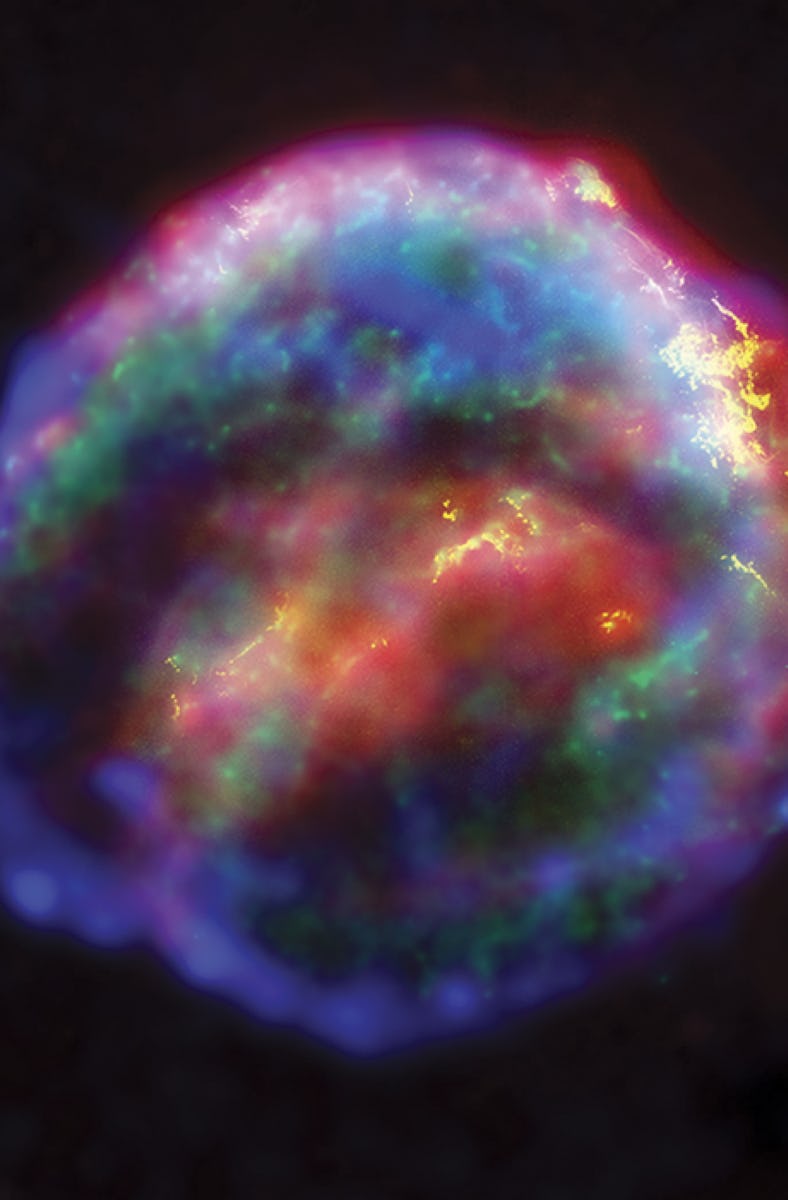25 Years Later, This Iconic NASA Telescope Lost Critical Funding To Keep It Alive
For almost 25 years, Chandra’s been watching cosmic chaos.

The 2025 NASA budget points to the beginning of the end for one of the agency’s longest-living space telescopes.
Just a few months shy of turning 25, NASA’s Chandra X-ray Observatory may soon be no more. “NASA proposes to reduce the budgets of the Hubble and Chandra observatories in order to balance investments in future Astrophysics missions and missions in operations,” the agency published on Monday in its fiscal year 2025 fact sheet.
Two main problems have emerged for Chandra, which is dedicated to observing the high-octane universe, from gravitational-wave-inducing collisions of neutron stars to powerful black holes, to spectacular supernovas.
The first is a spending resistance from Congress, according to NASA Administrator Bill Nelson. The other is that Chandra seems to be a deteriorating spacecraft.
An illustration of Chandra highlights its 2021 discovery of X-rays on Uranus.
Chandra’s revelations
As its name suggests, Chandra studies the intense cosmic activity that creates X-ray emissions. That includes scenarios that heat matter to millions of degrees, like frenetic magnetic fields or explosions. Through X-rays, Chandra helps astronomers to trace clouds of hot gas from the death of a star and to see the swirling matter just tens of kilometers from the point of no return of a black hole.
In 2017, Chandra helped astronomers see the afterglow emitted from a jet of debris expanding away from a kilonova — the intense collision of two dense stellar corpses called neutron stars — toward Earth. The explosion was important for science because it was powerful enough to perturb space-time itself and create gravitational waves.
NASA spacecraft observed emissions from the gravitational wave event called GW170817 (whose source is highlighted in the box). The animated image first shows visible light, detected by NASA's Hubble Space Telescope, followed by the X-ray afterglow that the Chandra X-ray Observatory captured.
In a study published in January of this year, scientists used Chandra data to study an eruption from an active supermassive black hole at the center of a nearby galaxy. Chandra data helped the team filter out extraneous information, like X-rays coming from somewhere else like binary stars.
Budget constraints and deterioration
Nelson told reporters earlier this week that NASA is facing budget constraints because of the debt ceiling agreement enacted in 2023, reported SpaceNews.
The second image shows a region of radiation that astronomers found is the end result of an eruption from a supermassive black hole at the center of a nearby galaxy. Chandra helped to narrow down the X-ray data from the galaxy, from the first image to the next.
The full request from the Biden-Harris Administration says the budget “prioritizes investments with a demonstrated return of value for the American taxpayer – investments in the future of deep space exploration, sustainable aeronautics, scientific endeavor, technological might, and inspiring the next generation, the Artemis Generation.” One of the highest priorities of the 2025 budget is to achieve a successful Artemis II flight — the first crewed return to lunar orbit in more than 50 years — which could fly as early as September 2025.
Hardware problems have also plagued Chandra. As reported by Space.com last October, Mark Clampin, director of NASA’s astrophysics division, was anticipating cuts to Chandra because the veteran spacecraft has “a number of issues right now.”
Those issues are from degradation over its mission lifetime, the 2025 full budget request states. “Several systems require active management to keep temperatures within acceptable ranges for spacecraft operations. This makes scheduling and the post-processing of data more complex, increasing mission management costs beyond what NASA can currently afford,” the document says.
Like many images from space, composites paint a bigger picture about what’s happening. This is Kepler's supernova remnant, and the image comes from a combination of observations made by NASA's Hubble Space Telescope, the Spitzer Space Telescope, and the Chandra X-ray Observatory.
The next stage is to “drawdown” to minimal operations. Hubble, though in much better condition, was also brought up in the budget request as a project that could see cuts in the future. Hubble is almost a decade older than Chandra.
The Biden budget request did acknowledge its pledge to NASA science operations on other “groundbreaking” missions like the James Webb Space Telescope, the Perseverance Mars rover, as well as new projects in the works.
While Chandra may soon face its curtain call, the science from this unique spacecraft will continue to be celebrated in the years to come.